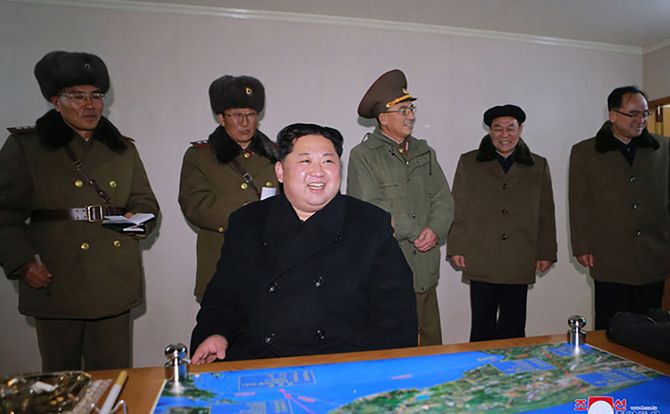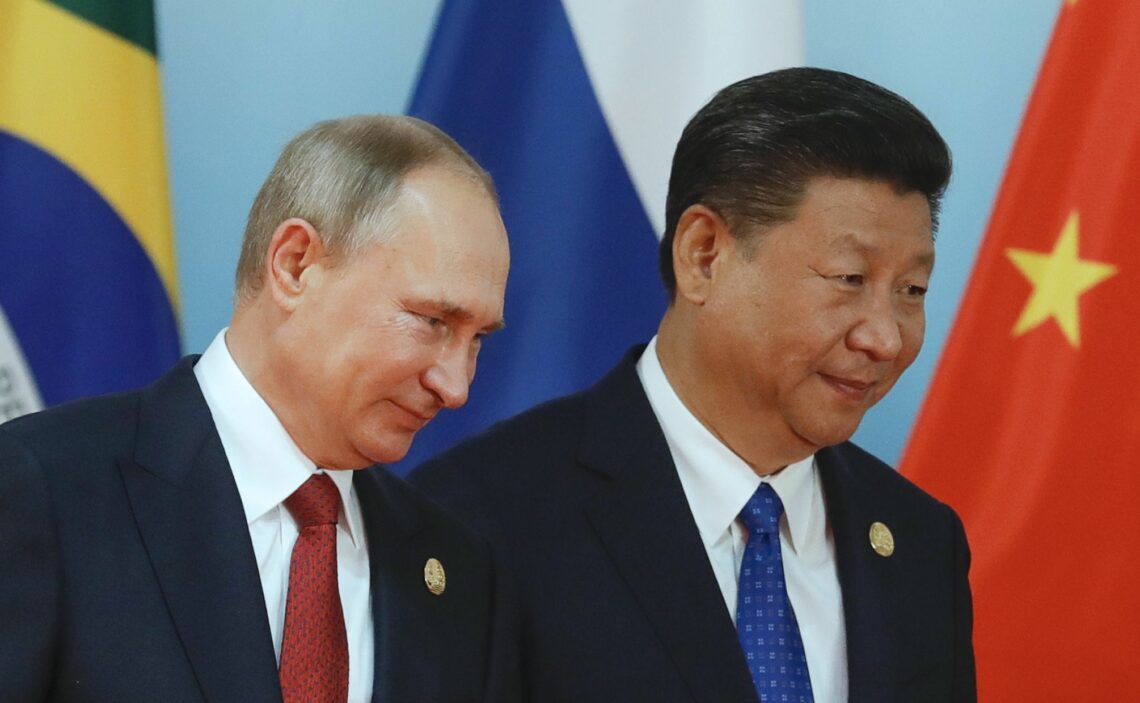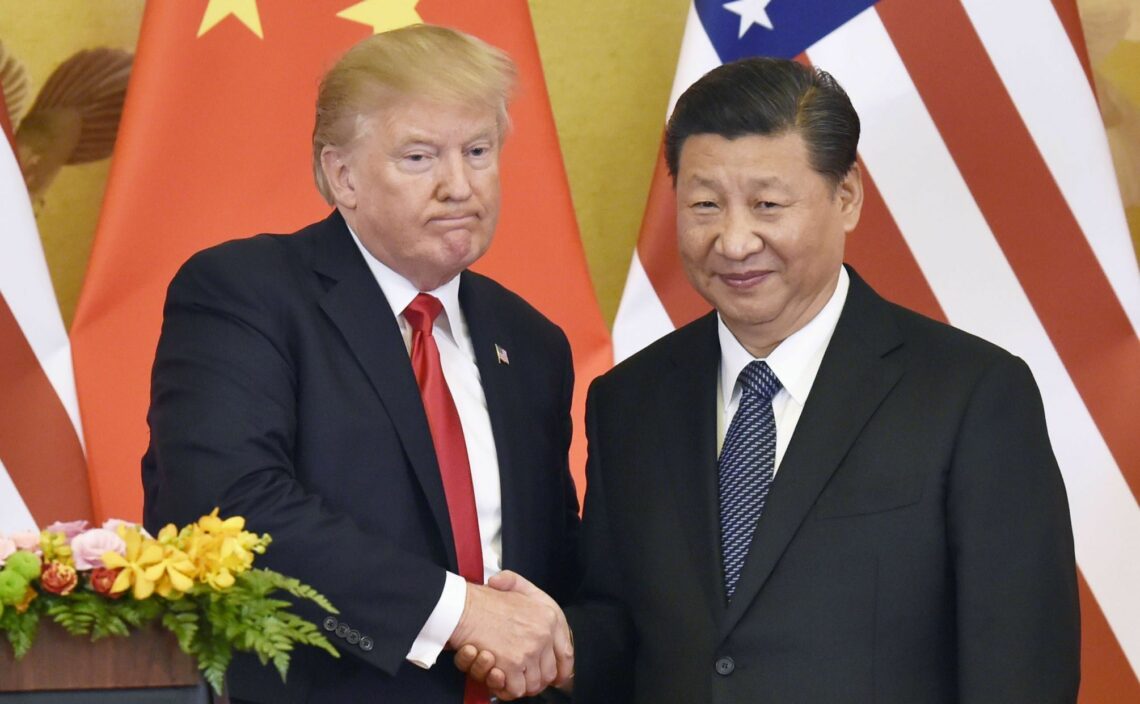2018 Global Outlook: North Korea and the U.S.-China-Russia triangle
Tensions between the United States and North Korea are having a big impact on the relationship between Moscow, Beijing and Washington. China has every incentive, but few options, to rein in its neighbor, while pressure on the U.S. to escalate increases.

In a nutshell
- Tensions in Korea are straining Beijing-Moscow-Washington relations
- An unexpected shock could set the big three nuclear powers against each other
- This situation lays bare Europe’s inherent weakness
The increasingly bellicose standoff between United States President Donald Trump and North Korean leader Kim Jong-un is sending shock waves throughout the global security system. The ultimate danger is that the confrontation will be pushed to the point of a nuclear conflict. While this risk must still be considered small, the brinkmanship is already causing considerable collateral damage on the triangular relationship between the three superpowers that was a defining feature of the Cold War.
The baseline scenario for 2018 is that developments will be defined by three well-established features. Deviations will result only from substantial shocks.
China’s rising power
The first feature is China’s status as a rising power, having become the largest economy in the world (measured in terms of purchasing power parity) and closing in on parity with the U.S. in military technology. Driven by political determination, technological prowess and brute economic strength, its naval power, especially, has become a serious concern for the Pentagon.
The People’s Liberation Army (PLA) Navy already has more major combatant ships than the U.S. Navy. The rate of its naval shipbuilding outpaces that of the U.S., and its anti-ship missiles outperform the American Harpoons. The strategic vision is to achieve hegemony over the Asia-Pacific, including the South China Sea. In case of conflict, U.S. carrier groups would have to be pulled back to Pearl Harbor, beyond the third island chain stretching from the Aleutian Islands through Hawaii and Fiji to New Zealand. (More on the First and Second Island Chains here.)
The Chinese economy still has sufficient momentum to sustain a fast military buildup.
The political prerequisites for realizing this vision are falling into place. President Xi Jinping has consolidated his power and although the Chinese economy no longer delivers 10 percent annual growth (if that ever was the case), it still has sufficient momentum to sustain a fast military buildup.
Russia in decline
The second, contrasting element is Russia as a declining power. In economic terms, it has long since been overtaken by China. The reality behind the oft-touted Sino-Russian “strategic partnership” is an axis of temporary convenience. Beijing still has some interest in hi-tech Russian weapons, but otherwise views its northern neighbor as a raw materials appendix to its own voracious economy.
The Kremlin is quietly shelving its hopes for gaining economic traction from Chinese trade and investment (“catching the Chinese wind in its sails”) and is instead looking at the prospect of Western economic sanctions remaining in place. Those sanctions are finally starting to bite, eroding the foundations of Russian military industrial capacity. The downward trajectory will steepen during 2018, albeit not to the degree envisioned by many Western pundits.

Like President Xi, Vladimir Putin has consolidated his personal power. He will be reelected for another six-year term in March, and despite Russia’s flagging economic performance, he is determined to preserve the highest possible level of military spending. One should not forget that at the height of the Cold War, the Soviet defense burden measured per capita was 6-7 times that of the U.S. At around 19 trillion rubles, the defense procurement plan for 2017-2027 remains level with that for 2011-2020.
Struggling America
The third and most complex set of structural features concerns the U.S., struggling to come to terms with China’s relentless rise and the reemergence of a Russian threat against NATO allies in Europe. The main problem in assessing what comes next lies in the contrast between the still powerful American edge in technology and sheer economic strength, and its increasingly evident shortage of strategic vision and internal cohesion.
The Trump administration is presiding over a rude political awakening that may produce a substantial boost in defense spending, including upgrades to U.S. nuclear and naval capabilities. But this is far from the same as having a vision of how to manage relations with the Sino-Russian opposition. While both China and Russia may now be characterized as stable autocracies with clarity of strategic purpose, the factional struggles that mark U.S. political culture are approaching pure self-destruction.
The U.S. will sink deeper into factional struggles, but retain a serious edge in capability.
The baseline trend for 2018 is for China to continue its rise, cementing its grip over the Asia Pacific region, while Russia stays in decline, allowing military spending plans to proceed at the cost of accelerated erosion in health care and education. The U.S. will sink deeper into factional struggles, but retain a serious edge in capability.
Korean disruption
The wild card that may cause disruption is North Korea. Its strategy is clear. The fates of Saddam Hussein and Muammar Qaddafi have reinforced Pyongyang’s conviction that the only safeguard against U.S.-orchestrated regime change lies in the possession of nuclear weapons.
Like President Putin in Russia, Kim Jong-un is probably convinced that the main strategic objective of U.S. foreign policy is to get rid of him personally. In a further, extreme parallel to Russia, the North Korean leadership is also clearly ready to maintain a defense burden that imposes very heavy costs on the population, even putting its long-term demographic viability at risk.
The most immediate short-term danger lies in the escalating arms race. Both Russia and China are deeply concerned about the introduction of the U.S. Terminal High Altitude Area Defense (THAAD) system that is already up and running in South Korea and may also be slated for Japan.
Chinese and Russian militaries responded to what they perceive as American escalation.
U.S. missile defense in Europe has already contributed to the souring of relations between Russia and NATO. Given the paramount role of nuclear weapons in its security doctrine, the Kremlin is concerned that it may now face a similar threat also on its eastern border. For its part, China is equally concerned that THAAD’s powerful radar system may look deep into its territory, undermining its security.
In mid-December, the Chinese and Russian militaries responded to what they perceive as American escalation by conducting joint missile drills in Beijing, aimed at practicing how to counter “sudden and provocative attacks on the two countries’ territories by ballistic missiles and cruise missiles.” Further joint manifestations of the kind may be expected.
A series of further missile launches would have the combined effect of raising U.S. concern that Pyongyang may eventually achieve its goal of being able to strike the U.S. mainland, and concerns in Japan and South Korea that the U.S. might not live up to its commitments to protecting its allies.
Nuclear escalation
The latter fear has already provoked demands that the U.S. station tactical nuclear weapons in the region, and further escalation may put political pressure on Japan and South Korea to go nuclear. Not only would Russia and China find such developments unacceptable, they would also cause nonproliferation efforts to collapse.
Even short of additional missile launches by North Korea, the American military buildup, with the deployment of three carrier battle groups and the staging of major joint exercises with both Japan and South Korea, increases the danger of both naval and air incidents involving China. If the process escalates further, Beijing may be provoked into missile drills to demonstrate its ability to push the U.S. Navy back to Pearl Harbor.

The increasingly vociferous U.S. insistence that China must do more to constrain North Korea is also problematic, because the two sides have very different perceptions of the threat. Although Beijing is unhappy about the general escalation, which serves to raise the U.S. military posture in the region, its overriding concern remains the increasingly real threat of regime collapse in North Korea.
China is playing a carefully balanced game, ready to accept sanctions in response to missile launches, but not to the point where there would be real pain. This game has now been played for quite some time, but never under such strained relations and with such potentially disastrous outcomes.
Three scenarios
Three possible scenarios bring home the size of the stakes. One is that a North Korean missile malfunctions and crashes on Japanese territory. Another is the threat of a missile strike near Guam, perhaps even an actual hit on the island. The third is hard evidence that North Korea has an operational, nuclear-armed intercontinental ballistic missile that can successfully strike a U.S. city. In any of these cases, it would be very difficult for Washington not to escalate with surgical strikes to cripple the regime in Pyongyang and its nuclear capability. Even short of escalating into a nuclear exchange, such a set of events would be Beijing’s worst nightmare.
Regime collapse would not only result in a massive stream of refugees. A unified Korea would also likely be friendly to Washington, and having U.S. troops on the territory of present-day North Korea would represent a considerable strategic defeat. Beijing therefore has every incentive to rein in its defense treaty partner in Pyongyang. But it is not clear whether it can succeed. The North has allegedly accumulated fuel stocks to last a year, so the threat of a cutoff does not carry much weight.
A more elaborate double game is being played by Russia, whose former role as protector of North Korea has been reduced to that of a marginalized bystander. In its dual ambition to regain regional influence and prevent the U.S. from engineering regime change, the Kremlin has already tossed a couple of lifelines to Pyongyang, routing North Korean internet traffic through a Russian company and expanding trade in energy supplies.
President Trump has commented on these moves, saying that while his administration has convinced China to reduce its financial and trade ties with North Korea, Russia “may be making up the difference. And if they are, that’s not a good thing.” And the U.S. is not alone in being concerned about what the Kremlin may be up to.
The core question regarding Russia concerns who has been instrumental in providing North Korea with its powerful new rocket engines. Although the manufacturer is located in Ukraine, the design (from the 1970s) is familiar to producers in Russia and Kazakhstan, meaning there could be several sources. The list includes Iran, which has a track record of colluding with North Korea, but Russia remains the more likely provider. If the Kremlin seeks to increase its influence in Northeast Asia by taking further steps on this path, then it is not making things easier for Beijing, and will not help Sino-Russian relations.
NATO implications
The escalating tensions around the Korean Peninsula may finally also have substantial implications for NATO in Europe. Prodded by the Trump administration, the main European members have been focusing on living up to the common commitment to spend 2 percent of gross domestic product (GDP) on defense. The alliance has brought life and purpose to its rapid reaction force, has stationed tripwire battalions in the Baltics and in Poland, and is considering stationing troops there permanently.
A serious confrontation with Russia would immediately expose Europe’s weakness.
While this commitment will act as a deterrent against further aggressive Russian moves in the neighborhood, it presupposes participation by U.S. forces. A serious confrontation with Russia would immediately expose the weakness of European ambitions to achieve “strategic autonomy,” and such a revelation may now be forthcoming.
As the U.S. Congress presses its demand that Ukraine is provided with lethal defensive weapons, relations with Russia will deteriorate even further. If at the same time there is a parallel escalation of tensions around North Korea, then the European theater risks becoming a sideshow to the Pacific.
This would tempt Russia to raise the stakes in Ukraine even further by turning up the heat in Donbas. Without a real U.S. commitment, the Europeans would be hard-pressed to come up with a credible response. And further tactical wins for the Kremlin will push a resolution of the crisis even further into the future.





